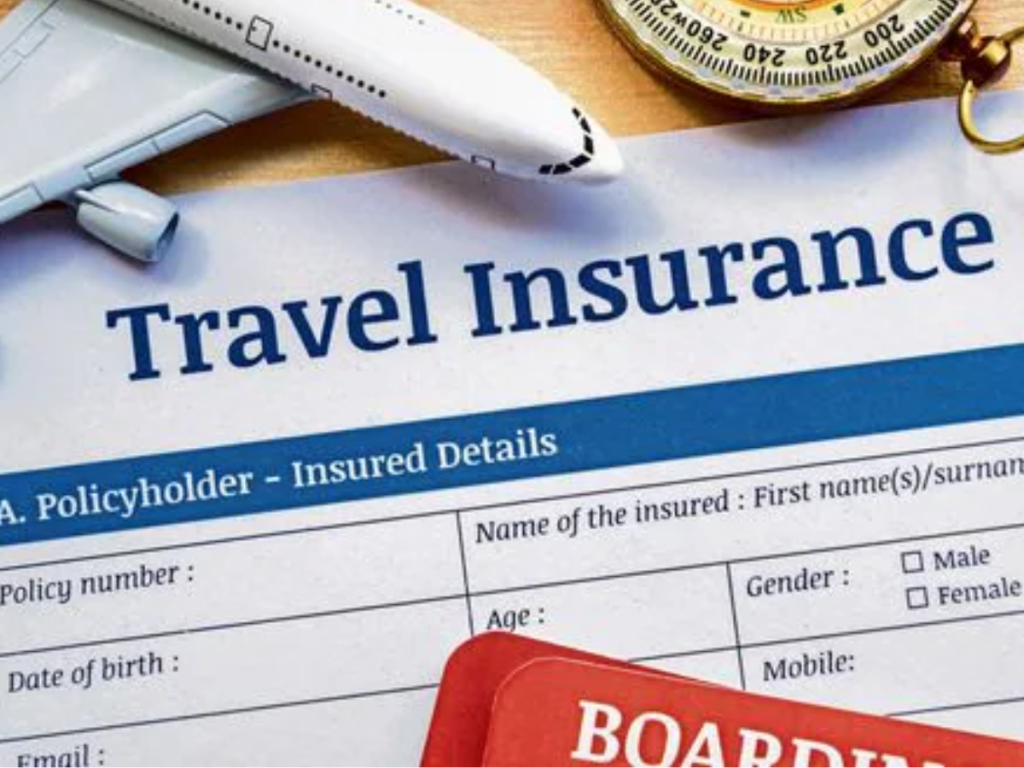Introduction
Traveling abroad is a thrilling experience, offering new cultures, cuisines, and landscapes to explore. However, alongside the excitement comes the potential for unexpected events—none more daunting than falling ill or getting injured in a foreign country. For many travelers, overseas medical expenses can quickly spiral out of control, leading to financial stress that overshadows what should have been an enjoyable journey. That’s where travel insurance comes in—a safety net that ensures you’re not left footing a staggering medical bill alone.
This article explores how travel insurance acts as a crucial shield against the high costs of overseas medical care, the types of medical coverage it offers, real-life examples, and the key factors travelers should consider when choosing a policy.
1. The Shocking Reality of International Medical Costs
Many people underestimate the cost of medical care abroad. Unlike in your home country, where you may have access to subsidized or insured health services, international medical facilities often charge non-residents the full price—sometimes even more.
For example, a broken leg in the United States could cost between $17,000 to $35,000 depending on complications and length of hospitalization. A simple appendectomy in Singapore might run around $15,000. In some European countries, private hospitals demand upfront payment before providing treatment, especially to non-EU citizens.
The reality is clear: one emergency can wipe out your savings. This is especially concerning for travelers with pre-existing conditions, elderly individuals, or adventure-seekers engaging in risky activities.
2. What Travel Insurance Covers in Medical Emergencies
Travel insurance typically includes several medical-related protections. Here are the key components:
a. Emergency Medical Treatment
This is the core of most travel insurance policies. It covers medical expenses incurred due to accidents or illnesses that occur while you’re traveling. Coverage often includes doctor’s visits, hospitalization, surgeries, diagnostic tests, prescription medications, and ambulance services.
b. Emergency Dental Care
Many policies cover emergency dental procedures resulting from an injury, such as a broken tooth due to a fall or accident. However, regular checkups and elective treatments are usually excluded.
c. Medical Evacuation and Repatriation
This covers transportation to the nearest appropriate medical facility if local care is inadequate, and in severe cases, the cost of returning home for treatment. Repatriation also includes covering the costs associated with returning a deceased traveler’s body home.
d. 24/7 Medical Assistance Hotline
Most policies include access to a 24/7 helpline that connects travelers with doctors, hospitals, and translators. This is especially helpful when you’re in a country where you don’t speak the language or aren’t sure how to navigate the healthcare system.
e. Hospital Cash Benefit
Some plans provide a daily allowance if you’re hospitalized for a certain number of days. This cash benefit can be used to cover miscellaneous expenses such as phone bills, meals for companions, or additional transportation costs.
3. Real-World Scenarios: How Travel Insurance Makes a Difference
Let’s look at a few examples that highlight how crucial travel insurance can be:
Scenario 1: Skiing Accident in Switzerland
John, a Canadian tourist, fractured his leg while skiing in the Swiss Alps. He was airlifted to a private hospital where he required immediate surgery. His total bill came to CHF 45,000 (~$50,000 USD). Fortunately, his comprehensive travel insurance covered all medical expenses, airlift costs, and even arranged for a medical escort back home.
Scenario 2: Food Poisoning in Thailand
Emma, an Australian backpacker, developed severe food poisoning while traveling in Thailand. She was hospitalized for three days. Without insurance, she would have had to pay over $2,000 in out-of-pocket expenses. Her travel insurance policy paid for her hospital stay, medications, and even refunded her pre-paid scuba diving tour that she had to cancel.
Scenario 3: Stroke in the U.S.
An elderly British couple vacationing in Florida faced a nightmare when the husband suffered a stroke. He was admitted to a U.S. hospital and needed intensive care and monitoring for a week. The cost soared to over $120,000. Thankfully, their travel insurance policy, which included senior medical coverage, footed the bill and arranged a medical evacuation to the UK for long-term care.
4. The Hidden Benefits: Beyond Financial Protection
While the financial safety net is the most obvious advantage, travel insurance brings peace of mind in other ways:
- Medical Referrals: Insurers often have networks of vetted hospitals and doctors to recommend, ensuring you receive quality care.
- Language Support: Translation services can help you communicate your symptoms accurately in a foreign language.
- Legal Assistance: If your injury involves legal complications (e.g., motor accidents), insurers may provide or fund legal aid.
- Family Travel Assistance: Some policies pay for a family member to join you if you’re hospitalized for a long period abroad.
- Pre-existing Conditions: Specialized policies exist that extend coverage even if you have chronic illnesses, provided they are declared in advance.
5. Common Misconceptions About Travel Insurance
Many travelers either skip buying insurance or choose the cheapest policy without understanding what it covers. Here are common misconceptions:
“I’m young and healthy, I don’t need it.”
Even the healthiest people can suffer unexpected injuries—whether it’s food poisoning, a sports injury, or an allergic reaction. Youth isn’t immunity from mishaps.
“My credit card has insurance.”
While some premium credit cards offer travel protection, the coverage is often limited in scope, and many don’t include comprehensive medical evacuation or treatment expenses.
“I’ll just go to a public hospital.”
In many countries, non-citizens aren’t eligible for subsidized care. Public facilities may also be overwhelmed or lack necessary resources for emergencies.
6. How to Choose the Right Travel Insurance Plan
When selecting a policy, especially for medical coverage, consider the following:
Coverage Amount
Opt for policies offering at least $100,000 in medical coverage. In high-cost countries like the U.S., Japan, or Switzerland, even basic treatment can be expensive.
Exclusions and Limits
Read the fine print. Many policies exclude high-risk activities (skydiving, scuba diving, etc.), mental health emergencies, or pre-existing conditions unless declared.
Pre-authorization Requirements
Some policies require you to call the insurer before seeking treatment (except in emergencies). Failing to do so might void your claim.
Reimbursement vs. Direct Billing
Check if the insurer can directly settle bills with the hospital or if you need to pay upfront and file a claim later.
Adventure or Sports Coverage
If your trip involves trekking, skiing, or scuba diving, ensure your policy includes coverage for those activities.
COVID-19 Coverage
Post-pandemic, many insurers offer optional or built-in coverage for treatment, testing, or trip cancellations due to COVID-19. Ensure your policy includes it if relevant to your destination.
7. The Importance of Documentation and Claims Process
To ensure successful claims:
- Always retain original receipts and hospital bills.
- Get written diagnosis and treatment summaries from doctors.
- Inform the insurance provider as soon as a medical incident occurs.
- Keep a copy of your policy, emergency contact numbers, and your insurer’s app (if available) handy.
Insurers typically provide easy ways to submit claims online, through mobile apps, or via email. Delayed submissions or missing documents are the most common reasons for rejected claims.
8. Tips to Stay Safe and Prepared Abroad
Even with insurance, prevention is always better than cure. Here are tips to stay safe:
- Research healthcare quality and risks at your destination.
- Pack a basic first aid kit and any prescription medications.
- Stay hydrated, especially in tropical or high-altitude areas.
- Be cautious with street food and tap water.
- Follow safety instructions during activities and excursions.
- Have emergency contacts saved offline.
9. Travel Insurance: An Essential Part of Smart Travel Planning
Just as you wouldn’t drive without auto insurance, traveling abroad without medical protection is a gamble. Whether it’s a brief city break or a months-long adventure, having travel insurance that covers medical emergencies gives you the confidence to explore freely—knowing you’re protected if something goes wrong.
Healthcare systems vary wildly across the globe, and access to quality care can be limited or prohibitively expensive. Travel insurance fills that gap, ensuring you won’t be left choosing between your health and your finances.
Conclusion
Travel insurance isn’t just a bureaucratic checkbox—it’s an essential component of responsible travel. It transforms unpredictable chaos into manageable inconvenience. By investing in a comprehensive policy, you’re not only safeguarding your finances but also guaranteeing that you’ll have access to timely, high-quality medical care no matter where in the world you are.
Ultimately, a travel insurance policy acts as a quiet guardian during your journey—often invisible, hopefully unnecessary, but absolutely

